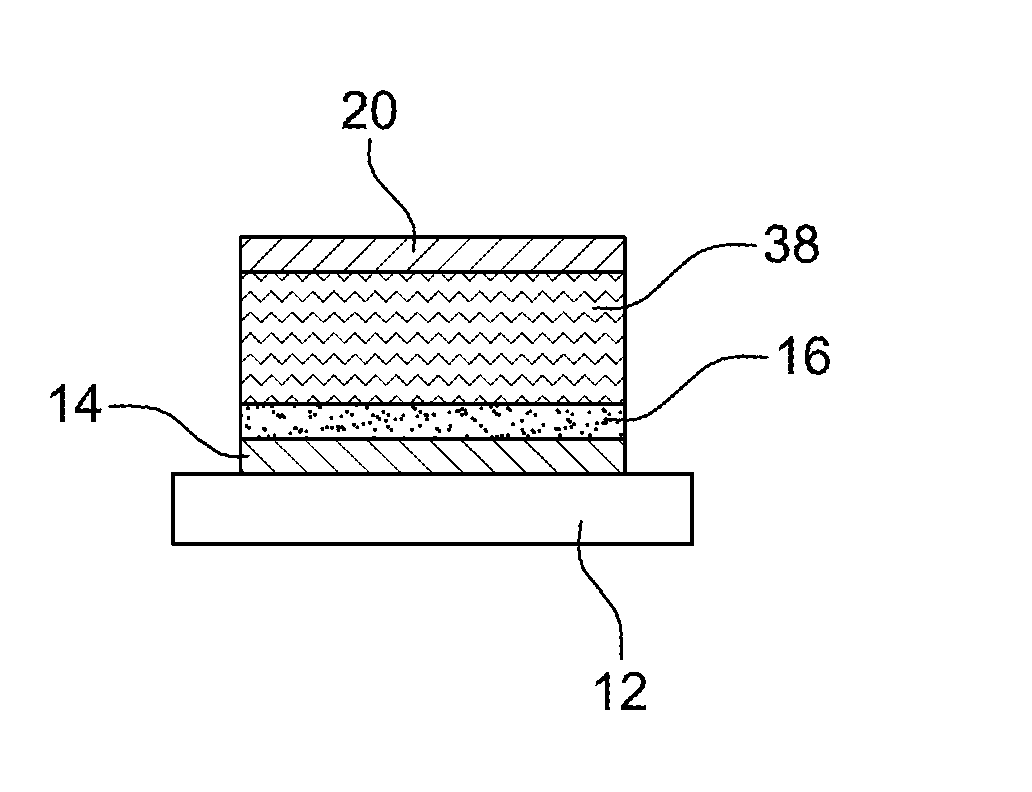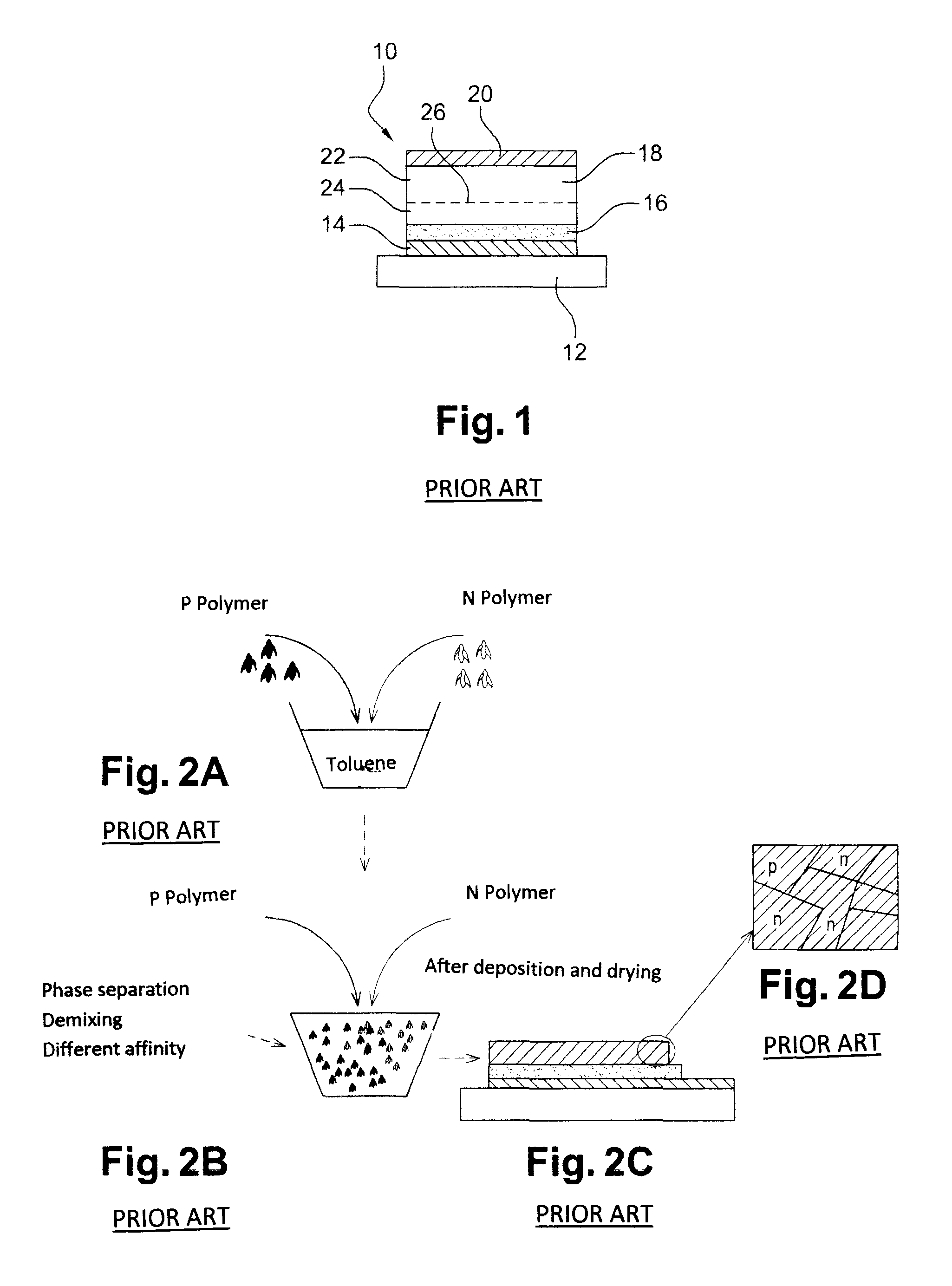Process for producing an organic semiconductor layer consisting of a mixture of a first and a second semiconductor
a technology of organic semiconductors and mixtures, which is applied in the field of manufacturing organic semiconductor layers, can solve the problems of difficult to accurately set the pore geometry, unstable solution, and inability to obtain such homogeneity with current deposition techniques, and achieve the effect of increasing accuracy and high density of pores
- Summary
- Abstract
- Description
- Claims
- Application Information
AI Technical Summary
Benefits of technology
Problems solved by technology
Method used
Image
Examples
Embodiment Construction
[0034]Referring to FIGS. 3A to 3G, a method for manufacturing an organic photodiode according to the invention conventionally starts with the forming of a glass substrate 12 (FIG. 3A), followed by the forming of an ITO metallization 14 by etching on substrate 12 to form the first electrode of the photodiode (FIG. 3B). The method then conventionally carries on with the deposition of a PEDOT:PPS injection layer 16 on first electrode 14 (FIG. 3C).
[0035]The method carries on with the manufacturing of a porous P3HT layer. More specifically, P3HT is dissolved or dispersed in a first solvent “B”, such as an alkane, for example. The solution thus obtained is mixed with a second solvent “C” non-miscible with first solvent “B”, having an evaporation temperature lower than that of first solvent “B”. For example, the first solvent is chlorobenzene or chloroform. The mixture thus obtained is emulsified, for example, by mechanical stirring, and emulsion 30 is deposited on injection layer 16 (FIG....
PUM
| Property | Measurement | Unit |
|---|---|---|
| width | aaaaa | aaaaa |
| width | aaaaa | aaaaa |
| organic semiconductor | aaaaa | aaaaa |
Abstract
Description
Claims
Application Information
 Login to View More
Login to View More - R&D
- Intellectual Property
- Life Sciences
- Materials
- Tech Scout
- Unparalleled Data Quality
- Higher Quality Content
- 60% Fewer Hallucinations
Browse by: Latest US Patents, China's latest patents, Technical Efficacy Thesaurus, Application Domain, Technology Topic, Popular Technical Reports.
© 2025 PatSnap. All rights reserved.Legal|Privacy policy|Modern Slavery Act Transparency Statement|Sitemap|About US| Contact US: help@patsnap.com



